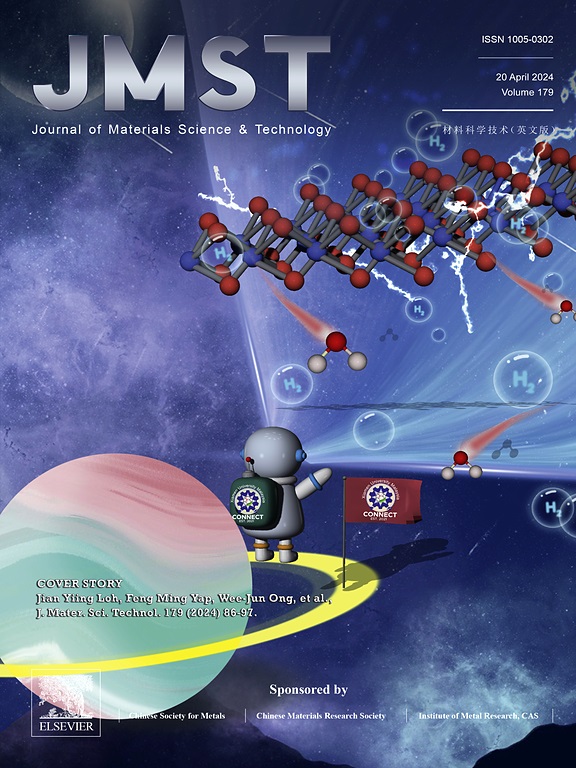Decoupling the orientation dependence of deformation-induced martensitic transformation via single-crystal micropillar compression
IF 11.2
1区 材料科学
Q1 MATERIALS SCIENCE, MULTIDISCIPLINARY
引用次数: 0
Abstract
This study explores the significant orientation dependence of deformation-induced martensitic transformation. By employing single crystalline micropillar compression, three typical low-index crystallographic orientations were selected to examine their influence on the martensitic transformation of metastable austenitic stainless steel. Results demonstrate that the [011] orientation significantly inhibits the formation of α'-martensite, whereas the [001] and [111] orientations more effectively facilitate phase transformation, which is closely related to the transformation mechanisms. Specifically, the [001] orientation, which is prone to stacking fault formation, promotes martensitic transformation significantly with the aid of ε-martensite and the decreased effective stacking fault energy during compression. Meanwhile, the [111] oriented pillars demonstrate the highest yield strength, with shear deformation responsible for the relatively high fraction of α'-martensite. Additionally, the non-Schmid behavior occurred in the [011]- and [111]- oriented micropillars were found and discussed. This research advances the understanding of orientation-dependent martensitic transformation and provides an optional way to tailor the Transformation-induced plasticity effect via grain orientation engineering.

通过单晶微柱压缩解耦变形诱发马氏体相变的取向依赖性
本研究探讨了变形诱发马氏体相变的显著取向依赖性。采用单晶微柱压缩法,选取了3种典型的低指数结晶取向,考察了它们对亚稳奥氏体不锈钢马氏体相变的影响。结果表明,[011]取向能明显抑制α′-马氏体的形成,而[001]和[111]取向能更有效地促进相变,这与相变机理密切相关。其中,[001]取向有利于层错形成,在压缩过程中ε-马氏体的存在和层错有效能的降低促进了马氏体相变。同时,[111]取向柱的屈服强度最高,剪切变形导致α′-马氏体含量较高。此外,发现并讨论了[011]和[111]取向微柱的非施密德行为。该研究促进了对取向相关马氏体相变的理解,并为通过晶粒取向工程定制相变诱导塑性效应提供了一种可选的方法。
本文章由计算机程序翻译,如有差异,请以英文原文为准。
求助全文
约1分钟内获得全文
求助全文
来源期刊

Journal of Materials Science & Technology
工程技术-材料科学:综合
CiteScore
20.00
自引率
11.00%
发文量
995
审稿时长
13 days
期刊介绍:
Journal of Materials Science & Technology strives to promote global collaboration in the field of materials science and technology. It primarily publishes original research papers, invited review articles, letters, research notes, and summaries of scientific achievements. The journal covers a wide range of materials science and technology topics, including metallic materials, inorganic nonmetallic materials, and composite materials.
 求助内容:
求助内容: 应助结果提醒方式:
应助结果提醒方式:


